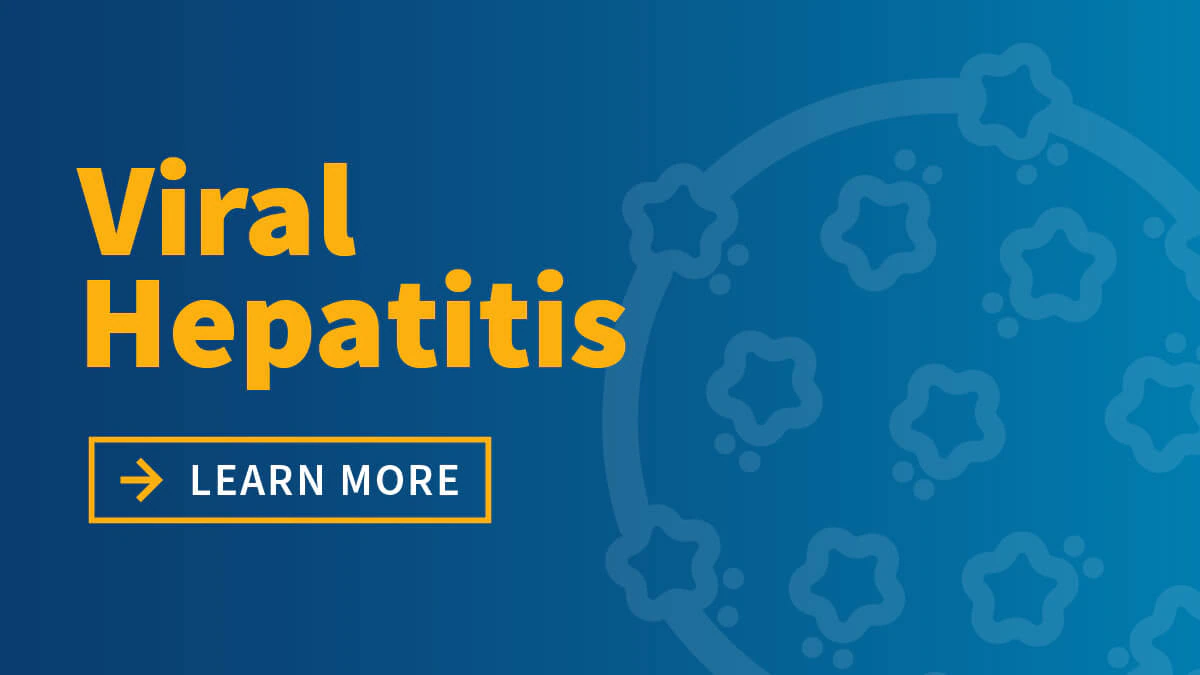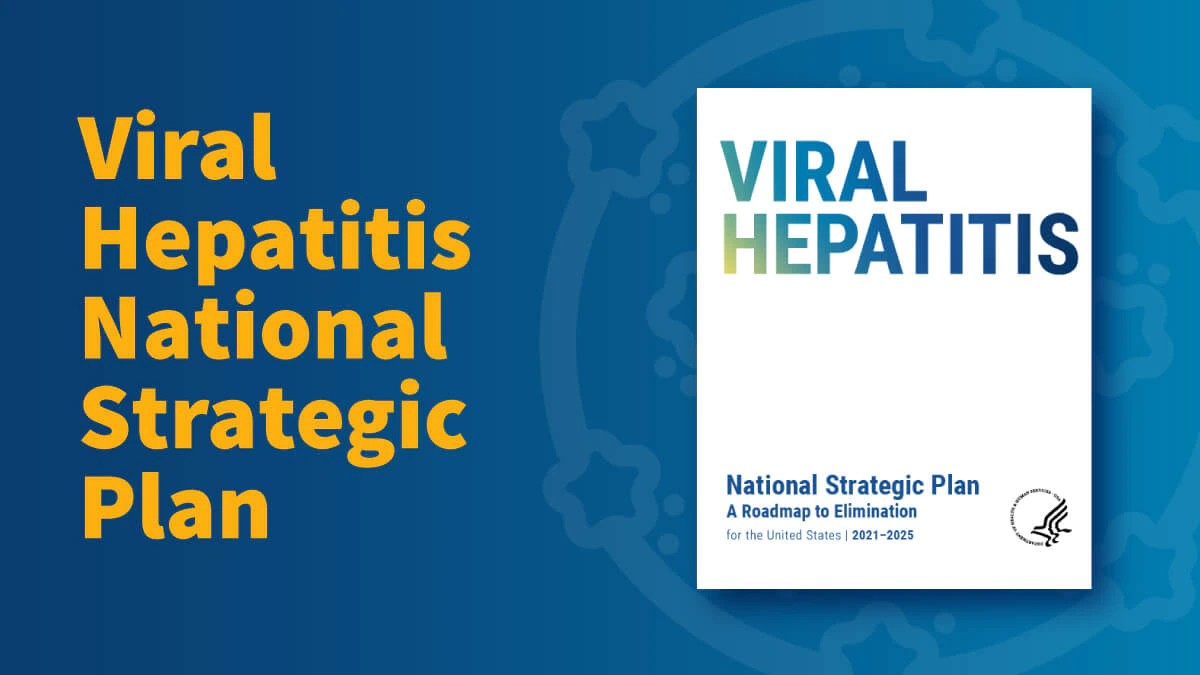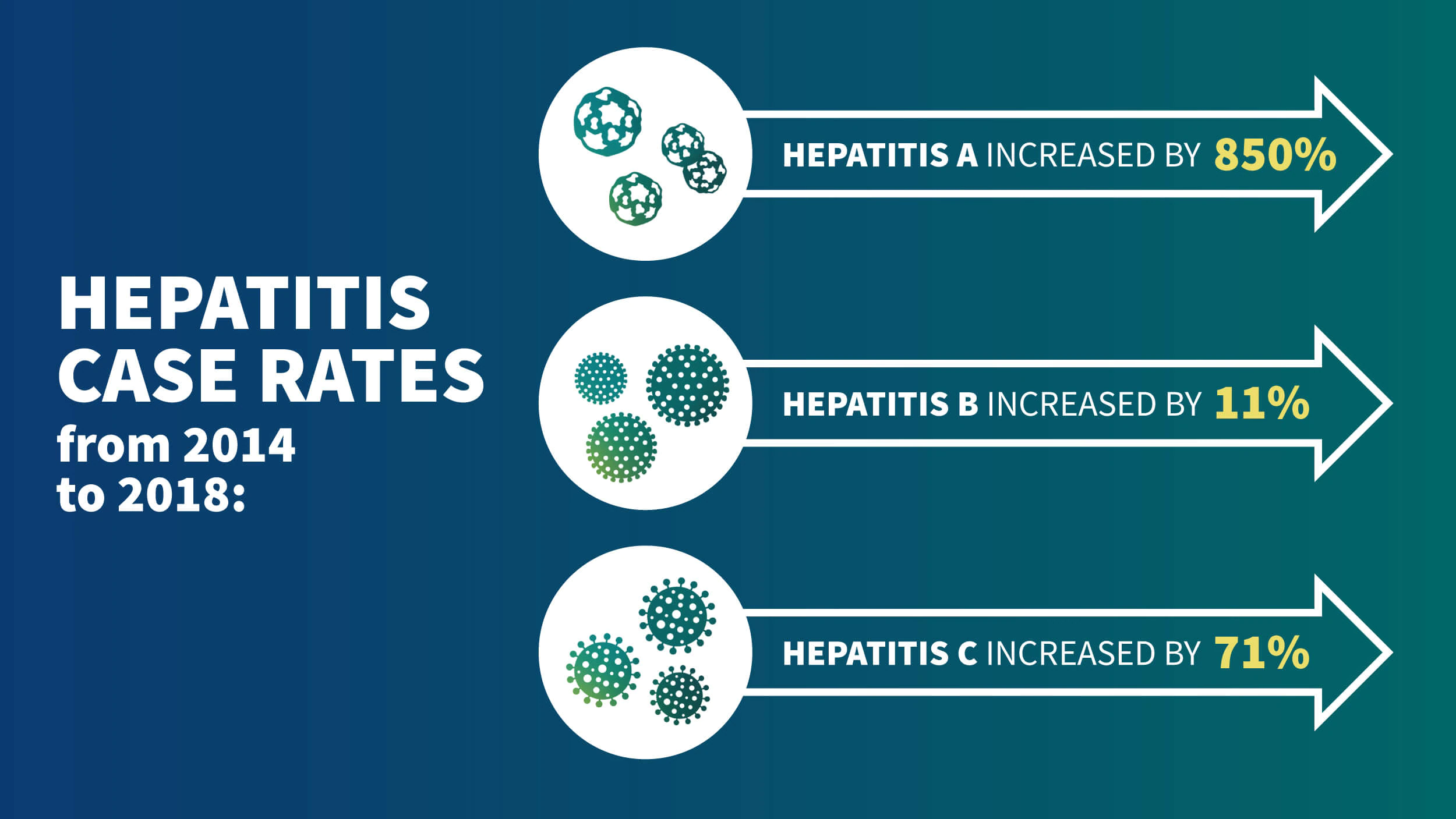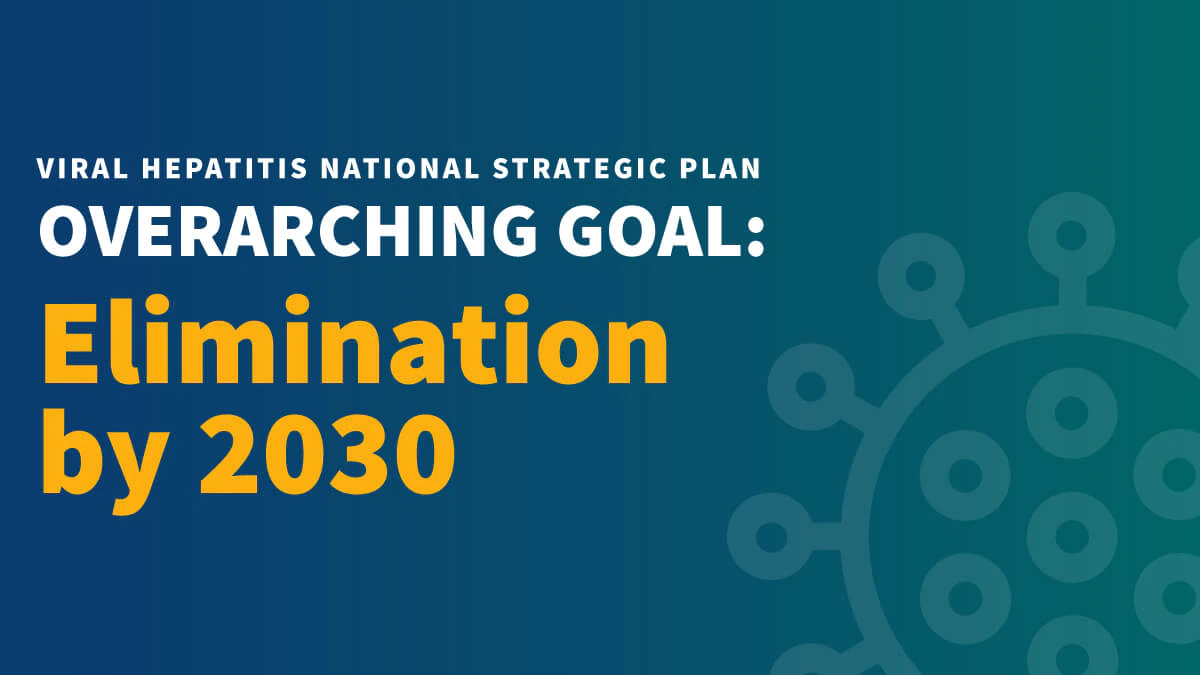Eliminating viral hepatitis as a public health threat requires action from all parts of society—federal, state, tribal, and local governments; nongovernmental organizations such as health care providers, health systems, payers, community- and faith-based organizations, academic institutions; and advocates, patients, and their families.
The resources below can help you share information about the Viral Hepatitis National Strategic Plan and its aim to eliminate viral hepatitis as a public health threat in the United States by 2030. We encourage you to use the resources below to enhance your communications materials in social media, emails, newsletters, presentations, flyers, etc as you engage others in this important effort. Help spread the call to action!
- Viral Hepatitis National Strategic Plan 2021-2025
- Viral Hepatitis Plan companion documents
- Viral Hepatitis Plan release webinar slideset
- Viral Hepatitis Plan Communications Toolkit (see below)
Social Media Graphics
Sample Email/Newsletter Copy
Day of Email
Subject Line: HHS Releases National Strategic Plan to Eliminate Viral Hepatitis as a Public Health Threat
Today, the U.S. Department of Health and Human Services (HHS) released a new national strategic plan to address the serious, preventable public health threat caused by viral hepatitis in the United States.
The Viral Hepatitis National Strategic Plan for the United States: A Roadmap to Elimination 2021–2025 (Viral Hepatitis Plan) sets forth a clear vision for a nationwide response to eliminate this public health threat:
The United States will be a place where new viral hepatitis infections are prevented, every person knows their status, and every person with viral hepatitis has high-quality health care and treatment and lives free from stigma and discrimination.
This vision includes all people, regardless of age, sex, gender identity, sexual orientation, race, ethnicity, religion, disability, geographic location, or socioeconomic circumstance.
The Viral Hepatitis Plan also provides goal-oriented objectives and strategies and serves as a roadmap that can be implemented by a broad mix of stakeholders at all levels and across many sectors, both public and private, to guide development of policies, initiatives, and actions for viral hepatitis prevention, screening, and treatment. It is an elimination plan, with the overarching goal of eliminating hepatitis as a public health threat in the United States by 2030.
For more information on the Viral Hepatitis Plan, visit https://www.hhs.gov/hepatitis/index.html. For more information on viral hepatitis, visit https://www.cdc.gov/hepatitis/index.htm.
Post Release Email
Subject Line: New National Strategic Plan Offers Roadmap to Eliminate the Viral Hepatitis Epidemics
The U.S. Department of Health and Human Services (HHS) recently released a new national plan to address the serious, preventable public health threat caused by viral hepatitis in the United States.
The Viral Hepatitis National Strategic Plan for the United States: A Roadmap to Elimination 2021–2025 (Viral Hepatitis Plan) sets forth a clear vision for a nationwide response to this public health threat:
The United States will be a place where new viral hepatitis infections are prevented, every person knows their status, and every person with viral hepatitis has high-quality health care and treatment and lives free from stigma and discrimination.
This vision includes all people, regardless of age, sex, gender identity, sexual orientation, race, ethnicity, religion, disability, geographic location, or socioeconomic circumstance.
The Viral Hepatitis Plan also provides goal-oriented objectives and strategies and serves as a roadmap that can be implemented by a broad mix of stakeholders at all levels and across many sectors, both public and private, to guide development of policies, initiatives, and actions for viral hepatitis prevention, screening, and treatment. It is an elimination plan, with the overarching goal of eliminating hepatitis as a public health threat in the United States by 2030.
For more information on the Viral Hepatitis Plan, visit https://www.hhs.gov/hepatitis/index.html. For more information on viral hepatitis, visit https://www.cdc.gov/hepatitis/index.htm.
Newsletter
Viral Hepatitis Plan Newsletter
By Carol Jimenez, Deputy Director for Strategic Initiatives
Office of Infectious Disease and HIV/AIDS Policy
The U.S. Department of Health and Human Services (HHS) has released a national plan to address the serious, preventable public health threat caused by viral hepatitis in the United States. The Viral Hepatitis National Strategic Plan for the United States: A Roadmap to Elimination 2021–2025 (Viral Hepatitis Plan) builds on three prior National Viral Hepatitis Action Plans over the last 10 years, and for the first time, aims to eliminate viral hepatitis as a public health threat in the United States.
Hepatitis A and hepatitis B are both preventable by vaccination and are routinely recommended by the CDC and its Advisory Committee on Immunization Practices. Hepatitis C is generally curable with one simple course of treatment. Viral hepatitis puts people who are infected at increased risk for liver disease, cancer, and death. They also collectively cost people, health systems, states, and the federal government billions of dollars each year. The Viral Hepatitis Plan’s commitment to eliminating viral hepatitis in the United States is a groundbreaking step on the path to address hepatitis A, hepatitis B and hepatitis C throughout the nation.
The Viral Hepatitis Plan is a whole-of-nation approach. It is intended to serve as a comprehensive, data-driven roadmap for federal and other stakeholders to reverse the increasing rates of viral hepatitis, prevent new infections, improve care and treatment and cure, and eliminate viral hepatitis in the United States by 2030. It takes a no wrong door and integrated approach to viral hepatitis, primary and specialty care, and other often intertwined infections – wherever a person seeks care, they should be screened for viral hepatitis and linked to care.
The Viral Hepatitis Plan creates a vision of a nation in which new viral hepatitis infections are prevented, every person knows their status, and every person with viral hepatitis has high-quality health care and treatment and lives free from stigma and discrimination. This vision is accompanied by five high-level goals to:
- Prevent new viral hepatitis infections
- Improve viral hepatitis-related health outcomes of people with viral hepatitis
- Reduce viral hepatitis-related disparities and health inequities
- Improve viral hepatitis surveillance and data use
- Achieve integrated, coordinated efforts that address the viral hepatitis epidemics among all partners and stakeholders.
The Viral Hepatitis Plan sets forth objectives for each goal, and strategies for each objective. Each of the goal areas present evidence-based strategies for stakeholders to use that are most likely to contribute toward achieving national goals to eliminate the public health threat of viral hepatitis. It also contains measures to gauge progress including reducing viral hepatitis-related disparities, and quantitative targets that, if achieved, would eliminate viral hepatitis by 2030.
The Data Driving the Viral Hepatitis Plan
Upward trends in viral hepatitis rates over the last decade have been dramatic. From 2014–2018, the rates of new hepatitis A cases increased by 850%, and the rates of acute hepatitis B and hepatitis C cases increased 11% and 71%, respectively. As of 2016, nearly 3.3 million people in the United States were living with chronic viral hepatitis.
The nation has improved efforts—according to 2017 data—to manage and treat people with hepatitis B and hepatitis C for the population overall, African Americans or Blacks, and people over age 45 with hepatitis B. However, increased efforts to implement available prevention tools, such as vaccines for hepatitis A and B, and clinical services for hepatitis B and hepatitis C infections are needed. Poor quality and a lack of data continue to impede effective viral hepatitis efforts. The Viral Hepatitis Plan recognizes that the data challenges must be addressed to effectively and efficiently eliminate viral hepatitis.
The Viral Hepatitis Plan uses national-level data to identify “priority populations” and geographic areas that are disproportionately impacted by viral hepatitis so that federal agencies and other stakeholders can focus their resources to realize the greatest impact. This should not undermine the need to prevent and address viral hepatitis for all who are at risk and affected by it. Stakeholders are encouraged to analyze the data for the populations and communities they serve to determine their priority populations.
Roadmap to Ending the Viral Hepatitis Epidemics
Coordinated by the Office of the Assistant Secretary for Health (OASH) through the Office of Infectious Disease and HIV/AIDS Policy (OIDP), the Viral Hepatitis Plan was developed collaboratively by more than 20 federal agencies. Stakeholders and the public had significant input into the development of this plan, through a variety of opportunities for public comment.
Let’s take the next steps together to implement the Viral Hepatitis Plan and reach the nation’s goal to eliminate viral hepatitis as a public health threat by 2030.
The Viral Hepatitis Plan strongly emphasizes the need to address stigma, discrimination, and social determinants of health to eliminate the viral hepatitis epidemics. The Viral Hepatitis Plan also highlights opportunities to create synergies by integrating viral hepatitis prevention and treatment efforts into other public health efforts to prevent and treat sexually transmitted infections, HIV, and substance use disorders.
The Viral Hepatitis Plan establishes indicators, as well as baseline measures and quantitative targets, to help measure progress toward the Plan’s goals. In the near future, HHS will release a Federal Implementation Plan to document the specific actions federal partners will take to achieve the Viral Hepatitis Plan’s goals. The Department will monitor progress toward meeting the Viral Hepatitis Plan’s goals and report that information annually.
For More Information
To learn more about the Viral Hepatitis Plan, visit https://www.hhs.gov/hepatitis/index.html. For more information about viral hepatitis prevention and treatment, visit https://www.cdc.gov/hepatitis/index.htm.
Press Release
U.S. Department of Health and Human Services
202-205-0143
ashmedia@hhs.gov
www.hhs.gov/news
Twitter @SpoxHHS
FOR IMMEDIATE RELEASE
MONTH, DATE, YEAR
HHS Releases National Strategic Plan to Address Viral Hepatitis
The U.S. Department of Health and Human Services (HHS) released a national plan to address the serious, preventable public health threat caused by viral hepatitis in the United States. The Viral Hepatitis National Strategic Plan for the United States: A Roadmap to Elimination 2021–2025 sets national goals, objectives, and strategies to respond to viral hepatitis epidemics. Building on three prior National Viral Hepatitis Action Plans over the last 10 years, the Viral Hepatitis National Strategic Plan is the first to aim for elimination of viral hepatitis as a public health threat in the United States by 2030.
This plan serves as a roadmap for stakeholders at all levels and across many sectors, both public and private, to guide development of policies, initiatives, and actions for viral hepatitis prevention, screening, care, treatment, and cure.
“The human and economic consequences of viral hepatitis epidemics are steep. Viral hepatitis is a public health threat that puts people who are infected at increased risk for liver disease, cancer, and death, affects the quality of life for millions of Americans, and costs the health care system billions of dollars annually,” said Admiral Brett P. Giroir, M.D., Assistant Secretary for Health. “The nation is losing ground in the fight against viral hepatitis despite safe and effective hepatitis A and hepatitis B vaccines, and a hepatitis C cure that works after an eight-week course of medicine.”
From 2014–2018 in the United States, the rate of new hepatitis A cases increased by 850%, the rate of acute hepatitis B increased by 11%, and the rate of acute hepatitis C cases increased by 71%. As of 2016, nearly 3.3 million people in the United States were living with chronic viral hepatitis—an estimated 862,000 with hepatitis B and 2.4 million with hepatitis C.
The impact of the viral hepatitis epidemics does not fall equally across all populations. People who use and inject drugs, people with HIV, and people experiencing homelessness are disproportionately impacted by viral hepatitis. Significant racial and ethnic disparities and environmental conditions where people live, learn, work, and play result in an unequal burden of viral hepatitis in Asian and Pacific Islander, American Indian/Alaskan Native, and non-Hispanic Black communities.
Coordinated by the Office of the Assistant Secretary for Health (OASH) through the Office of Infectious Disease and HIV/AIDS Policy (OIDP), the Plan was developed by more than 20 federal agency partners. Stakeholders and the public had significant input into the development of this plan, through a variety of opportunities for public comment.
The Viral Hepatitis Plan focuses on hepatitis A, hepatitis B, and hepatitis C—the three most common hepatitis viruses that have the largest impact on the health of the nation. It identifies populations that experience the highest burden of viral hepatitis based on nationwide data so that federal agencies and other stakeholders can focus their resources to realize the greatest impact.
The Viral Hepatitis Plan includes five goals to guide planning efforts:
- Prevent new viral hepatitis infections.
- Improve viral hepatitis-related health outcomes of people with viral hepatitis.
- Reduce viral hepatitis-related disparities and health inequities.
- Improve viral hepatitis surveillance and data use.
- Achieve integrated, coordinated efforts that address the viral hepatitis epidemics among all partners and stakeholders.
For More Information
To learn more about the Viral Hepatitis Plan, visit https://www.hhs.gov/hepatitis/viral-hepatitis-national-strategic-plan/index.html. For more information about viral hepatitis prevention and treatment, visit https://www.cdc.gov/hepatitis/index.htm.
Viral Hepatitis Plan Key Messages
- Viral hepatitis is a serious, preventable public health threat that puts people who are infected at increased risk for liver disease, cancer, and death, contributes to substantial health disparities, stigma, and discrimination, and collectively costs people, health systems, states, and the federal government billions of dollars each year.
- The Viral Hepatitis National Strategic Plan for the United States: A Roadmap to Elimination 2021–2025 (Viral Hepatitis Plan or Plan) covers the most common types of viral hepatitis: hepatitis A, hepatitis B, and hepatitis C—the hepatitis viruses that most significantly impact the health of the nation. The Plan provides a framework to control the viral hepatitis epidemics and eliminate viral hepatitis as a public health threat in the United States by 2030.
- Elimination is defined in the Plan and by the World Health Organization (WHO) as a 90% reduction in new chronic infections and a 65% reduction in mortality, compared to a 2015 baseline, although the Plan uses 2017 data as a baseline.
- The Viral Hepatitis Plan is designed to facilitate a whole-person health perspective and whole-of-nation response to the hepatitis epidemics in the United States and to successfully eliminate viral hepatitis as a public health threat by 2030.
- The Viral Hepatitis Plan lays out a clear vision for how the United States will be a place where new viral hepatitis infections are prevented, every person knows their status, and every person with viral hepatitis has high-quality health care and treatment and lives free from stigma and discrimination.
- The Viral Hepatitis Plan provides goal-oriented objectives and strategies and serves as a roadmap that can be implemented by a broad mix of stakeholders at all levels and across many sectors, both public and private, to guide development of policies, initiatives, and actions for viral hepatitis prevention, screening, and treatment. Its vision is accompanied by the following five high-level goals, which frame the Plan’s more specific objectives:
- Goal 1: Prevent new viral hepatitis infections
- Goal 2: Improve viral hepatitis-related health outcomes of people with viral hepatitis
- Goal 3: Reduce viral hepatitis-related disparities and health inequities
- Goal 4: Improve viral hepatitis surveillance and data use
- Goal 5: Achieve integrated, coordinated efforts that address the viral hepatitis epidemics among all partners and stakeholders.
- Each of the goal areas present evidence-based strategies, for stakeholders to use, that are most likely to contribute toward achieving national goals to eliminate the public health threat of viral hepatitis.
- The Plan identifies disproportionately impacted populations with higher rates of viral hepatitis incidence, prevalence, and mortality (i.e., priority populations) based on national surveillance data, so that federal agencies and other stakeholders can focus their resources to realize the greatest impact. This approach should not diminish efforts to increase awareness, prevention, treatment, and integration of viral hepatitis efforts more generally, for all populations. Stakeholders are encouraged to use the data for the populations and communities they serve to help focus their own efforts for the greatest impact.
- The Viral Hepatitis Plan emphasizes viral hepatitis as part of a syndemic, which occurs when health-related problems—such as viral hepatitis, HIV, sexually transmitted infections (STIs), and substance use disorders (SUDs) —cluster by person, place, or time and interact synergistically. The syndemic also includes social determinants of health, stigma, discrimination, and mental health. This complex, multifactorial environment must be addressed to eliminate viral hepatitis in the United States.
- The Viral Hepatitis Plan, the HIV National Strategic Plan: A Roadmap to End the Epidemic (2021–2025), the first-ever Sexually Transmitted Infections National Strategic Plan (2021–2025), and Healthy People 2030 (whose targets will be updated to reflect these national strategic plans) are all aligned.
- An integrated approach to viral hepatitis and the related public health challenges of the syndemic will reduce fragmented care and ultimately reduce viral hepatitis infection rates. The Plan provides a roadmap to integrate prevention, screening, and linkage to care for all components of the syndemic, so that we can meet people where they are with no wrong point of entry to health care and related systems.
- The Viral Hepatitis Plan recognizes the importance of addressing social determinants of health to improve health outcomes for racial, ethnic, and sexual and gender minority populations. By working to establish policies and programs that positively influence social and economic conditions and by supporting changes in individual behavior, health can be improved and sustained, and disparities reduced.
- Reversing the rates of viral hepatitis, preventing new infections, and improving care and treatment require a strategic and coordinated approach by federal partners in collaboration with state and local health departments, tribal communities, community-based organizations, and other nonfederal partners and stakeholders.
- State, tribal, territorial, and local jurisdictions, as well as health care providers, health plans, community-based and faith-based organizations, advocacy groups, and other institutions should review data that pertain to the populations and communities they serve. This review will help each stakeholder determine how best to focus efforts and resources to achieve results with the highest impact.
- The Viral Hepatitis Plan was developed through a robust process that included gathering feedback from stakeholders across health care and related fields. Partners throughout the federal government, as well as input from hundreds of nonfederal stakeholders including state, tribal, territorial, and local governments, researchers, health plans and providers, community groups, and national and local organizations that work in viral hepatitis and related fields, have helped shape the goals, objectives, and strategies in this plan.





